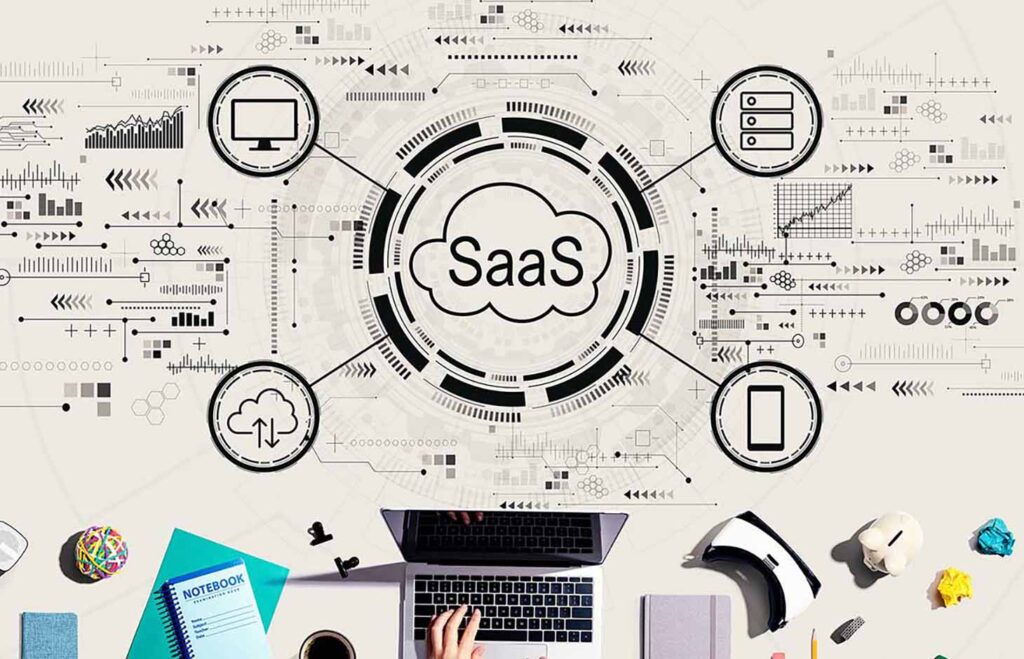At the dawn of the new millennium, cloud computing was born. And with some early adopters, software as a service (SaaS) got its start.
Yet, there was reluctance in the tech community to adopt SaaS as a viable business model. It was just a trend, a passing fad, naysayers would argue—a trend only small businesses would hop on.
Enterprises would turn their nose up to this new way of selling software and doing business.
But the internet got faster.
And faster.
Today, the ubiquity of SaaS and the recurring revenue software model is like no other.
In a recent report by Gartner, global spending on SaaS and cloud services is expected to grow 18.4% in 2021 to $304.9 billion. That’s up from $257.5 billion in 2020.
The COVID-19 pandemic is accelerating this growth, according to the report. Nearly 70% of organizations that use cloud services are expected to increase their cloud spending amid the push to remote work.
“The pandemic validated cloud’s value proposition,” said Sid Nag, the research vice president at Gartner.
“The ability to use on-demand, scalable cloud models to achieve cost efficiency and business continuity is providing the impetus for organizations to rapidly accelerate their digital business transformation plans. The increased use of public cloud services has reinforced cloud adoption to be the ‘new normal,’ now more than ever,” Nag added.
The cloud space—which includes SaaS businesses—is expected to see sustained growth through 2024 as businesses look to thrive in a remote-working world.
With so much growth happening, let’s look at some of the latest statistics and trends in the SaaS industry.
1. 73% of Organizations Will be Using All or Mostly SaaS Solutions by 2021
Source: BMC
It’s no surprise that SaaS is growing as users of SaaS products and services have exploded over the past several years.
While SMBs and start-ups are keen to use SaaS, enterprises are also taking it up for its agile and affordable solutions. Here are some key findings on businesses that use SaaS.
- Organizations with 250+ employees use more than 100 SaaS apps.
- In 2021, we’re expected to see 73% of organizations using all or mostly SaaS solutions.
- Nearly 85% of small businesses have already invested in SaaS options.
2. 65% of The World’s GDP is Forecast to Be Digitalized by 2022
Source: FinancesOnline
The global digital transformation market—which entails the use of digital technologies to support business processes—is expected to grow to $1,009.8 billion by 2025. From health care to financial services, various industries are embracing digital transformation, and they’re using SaaS solutions to address their ever-growing needs.
This means SaaS businesses will be essential not only in the start-up and rapid growth space, but also in the enterprise space, which is using digital strategy to scale.
One segment that’s experiencing rapid growth amid this digital transformation is artificial intelligence. As we’ll explore later in this article, this bodes well for SaaS businesses too.
3. Recurring Revenue in The SaaS Space Led to Simpler Forecasting and a 12% Rise in Subscription Revenue, Even Amidst a Pandemic
Source: CFO
The “stickiness” of subscription customers and the predictable recurring revenue that comes along with them made it a lot easier for SaaS businesses to plan, forecast, and press onward throughout 2020 compared to businesses in other industry sectors.
As businesses transitioned to remote environments and customers stuck with and flocked to new cloud solutions, subscription revenue expanded at a 12% rate.
By comparison, in the first half of 2020 S&P companies saw a 10% annualized decline in sales.
4. Expect SaaS Businesses to Pounce on Artificial Intelligence, Which has a Projected Market Value of $733.7 Billion by 2027
Source: Grandview Research
Tasks that were once performed by humans are now being done by machines. And machines are doing a fantastic job of it.
So much so that AI technology has a projected market value of $733.7 billion by 2027.
AI creates efficiency and increases productivity as it automates repetitive tasks, and it’s expected to be a disruptive force in SaaS as it enables everything from better data use to better security.
Examples of SaaS businesses that use AI:
- Hubspot uses AI to better organize its databases and also to optimize content among its customers.
- Marketing automation platform MailChimp uses AI’s predictive intelligence and effective data management to keep its business in peak shape.
Expect AI’s reach in SaaS to widen in the years to come.
5. Analytics in SaaS is Expected to Grow by 23.3% Through 2022
Source: Piesync
Data is a hot commodity.
And SaaS businesses know it, especially businesses like Tableau or Chartio, which revolve around data. User spending on data-sifting SaaS businesses is expected to grow by 23.3% between 2017 and 2022.
Expect analytics to take center stage in the realm of SaaS as we go into 2022 and beyond.
6. SaaS Will Become the Most Popular Cloud Service Model Through 2021, with 75% of Total Cloud Workloads and Compute Instances Stemming from SaaS Workloads
Source: Business.com
Small and midsize businesses (SMBs) are fueling the growth behind SaaS becoming the most popular cloud service model this year. Expect 75% of all cloud workloads and computing instances to stem from SaaS applications in 2021.
A cloud workload is a specific application, service, or a specific amount of work that can be run on a cloud resource.
A compute instance refers to the running of software.
Nearly 50% of SMBs also said their cloud usage will be higher than planned, in part due to the COVID-19 pandemic.
7. 84% of Users Feel Customer Experience is as Important as a Business’s Products; How Well SaaS Does in 2021 and Beyond Depends on Customer Care
Source: Piesync
Salesforce reports 84% of customers feel the experience a business provides is as important as the business’s products or services. Essentially, if a customer isn’t happy, they’ll leave and take your recurring revenue with them.
This statistic offers us one key insight: customer experience will remain a priority for SaaS businesses looking to scale.
And customer experience will be an important factor in how well a SaaS business does in the future.
8. Use of Marketing Automation Tools Expected to Reach $25 Billion by 2023
Source: Smart Karrot
Marketing automation tools manage marketing processes and campaigns, helping businesses scale while saving them time. This industry is expected to grow by $25 billion in 2023, and SaaS businesses are noticing.
Expect to see even more SaaS businesses in the field of social media automation and email automation, which currently includes major players like HootSuite and MailChimp.
9. SaaS Will See Ample Opportunity with Mobile Devices as 73% of The World’s Population Will Browse the Net on Phones by 2022
Source: Codica
Nearly 73% of the global population will browse the internet using mobile devices by 2022. Expect more influential SaaS apps to be developed with a mobile-first mindset.
As companies and solo entrepreneurs manage business using their phones, SaaS will grow to tackle complex challenges through mobile means. This will lead to faster and mobile-responsive sites, in turn, shaping the direction of SaaS both this year and beyond.
10. Growing Need for Thought Leadership in SaaS as Only 24% of SaaS Businesses Use Content to Scale
Source: Andolasoft
Only 24% of SaaS businesses currently create content to educate and inspire their audiences. And 11% of SaaS businesses don’t even have a blog.
These dismal numbers are expected to change as the SaaS space continues to get more saturated and businesses look to become thought leaders in their space. This trend will continue to grow in 2021 and beyond.
11. SaaS Accounts for Less Than 15% of Total Enterprise Software Spending
Source: Incredo
SaaS has come a long way in the enterprise space from when Salesforce launched the first SaaS solution in 1999. Yet, it still has a long way to go.
But the market is vast and the potential for SaaS to grow recurring revenue among enterprise businesses is there. With a forecast that calls for SaaS segments to grow substantially across the globe, it’s expected SaaS will make a bigger dent in the enterprise space in 2021 and beyond.








